
Healing Generational Trauma Through Art w/ Erin ONeill
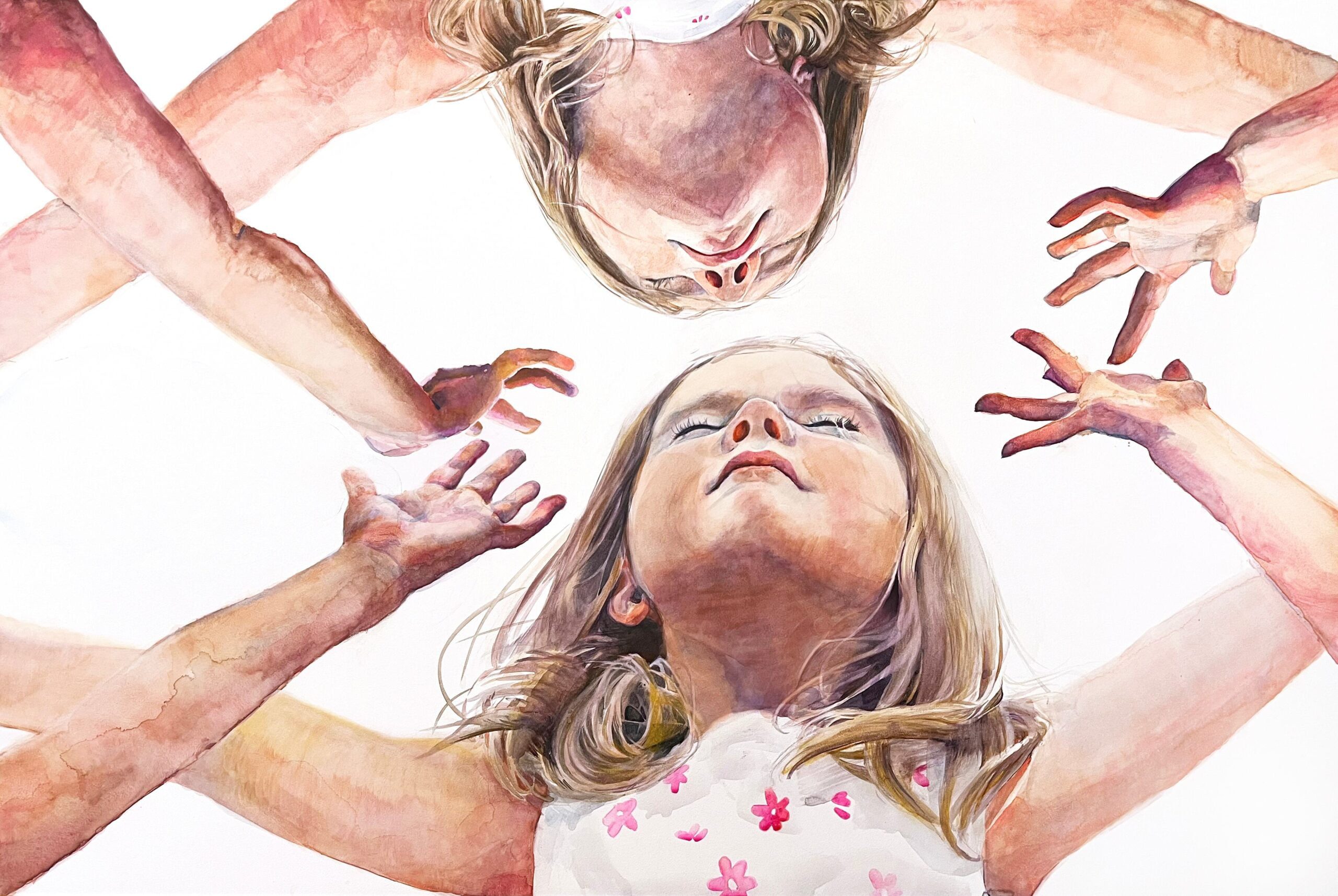

Erin Elizabeth ONeill born in Louis Missouri, lives and works in Chicago. She received her
BFA from the Kansas City Art Institute in 2008 for Painting and Drawing. Her work reflects a
deep love of figurative symbolist art. Her paintings and watercolors have been exhibited in notable galleries such as the ARC Gallery (Chicago, IL), Paradice Palase (Brooklyn, NY), Dallas Metro Arts Contemporary (Dallas, TX), Woman Made (Chicago, IL) The St. Louis Artist Guild (St. Louis, MO).
Painting and drawing with watercolour and ballpoint pen, she depicts images of her inner child using
her daughter as a reference in her art. These paintings and drawings are created in tandem with
her own mental health journey, as she confronts generational trauma and grief. Accessing her inner
child had a profound impact on her ability to heal emotional scars she had been bearing for
decades.
For me the innerchild has become a spiritual guide in my healing process and connecting with her is a necessary part of my artistic process.
Erin often paints on Aquabord, Claybord, and Yupo paper. Erin enjoys the challenge of releasing her
expectations of how the paint will behave on different surfaces. She finds it more dynamic to
leverage the blooms and bleeds of color to cast a more emotional painting. Leaving her
background ambiguous, and often times entirely untouched, she invites the viewer into conversation
directly with the subjects in her compositions. The gaze of the figures, and their movement
transmute sensations of joy, forgiveness, and tenderness we often struggle to reserve for
ourselves.


Erin on working with the Ballpoint says, “Ballpoint pen allows me to play with soft, yet precise markmaking that I find meditative, while the smaller scale of this work makes it easy to work on them in domestic spaces. I love using such a humble and familiar tool like a ballpoint pen, to create drawings with unexpected depth and
movement.” She believes these drawings challenge preconceptions that formal art requires formal
tools, and she enjoys discovering unexpected possibility in common materials
In an exclusive interview with the artist Erin ONeill, she shares how her therapy sessions inspired her to create these artworks. She connected with her inner child and found forgiving and self-love the biggest tools in her healing journey, which is the central theme of her work. Erin’s medium of work is ball points and watercolours and she has also done an interesting series of ‘Chef Portraits’ of Ink on Yupo. Read on to explore more about the artist.
1. Erin, can you share what ‘the healing power of inner child’ means for you?
The healing power of the inner child was an idea introduced to me during therapy a few years ago. I was trying to process a lot of trauma, loss, and grief and my therapist began doing visualization exercises and guided meditations where I would seek out the younger versions of myself as a way of speaking directly to my own learned feelings of fear and self-doubt. I was surprised to find these younger versions of myself were very much inside me and in very real ways that I could tap into emotionally.
This connection to my inner child and the practice of learning how to offer those parts of me, forgiveness, and self-love had an incredible effect on me. I began realizing that any pain I experienced, inflicted or otherwise, was something I could only heal in my own body and mind. Whatever the circumstances were, my emotions boiled down to an internal experience. And I realized it was entirely within my power to offer myself relief rather than waiting for it to come from something external. When I talk to my inner child, my defences come down, and I open space for those parts of me that maybe I had been made to feel ashamed or afraid.


While I had been making paintings that depict children for decades, standing in my studio I had this lightbulb moment that these paintings I had done of my niece or my daughter were actually personifications of this younger version of myself. I was creating space for parts of me that had not been given a voice before. I think everyone right now is experiencing a reckoning wi trauma that goes back through our own lineages. These experiences have informed our family dynamics and beliefs about our identities. We are recognizing that whether we like it or not, we are all participating in this pain collectively. And I began to wonder what it would be like if we were given the opportunity to access those parts of ourselves that needed forgiveness or love or validation – if we started by healing our own pain we could contribute to a greater, more collective healing.
2. You work with different mediums, watercolours/ballpoint pens/ Ink painting. What would you say is your favourite medium to work with?
I’m always excited by the different surfaces I can play on with watercolour. The development of Watercolor Ground, a primer that can be applied to nearly any surface like a gesso, has opened up the possibility of painting on a huge range of surfaces. I’ve painted on boards, copper, and even tile, but I’ve recently fallen in love with Yupo paper, which has a slick, non-porous paper that creates a luminosity to the paint as it dries. Because the paint dries on the surface there is more intensity in the chroma. Additionally, this surface has varying grades of translucence and it can really create an interesting effect on the final image. Watercolour is such a dance. You have to learn how to either lead or follow and respond to how it moves. I don’t always know what’s going to happen next when I’m painting and I find that really exciting.
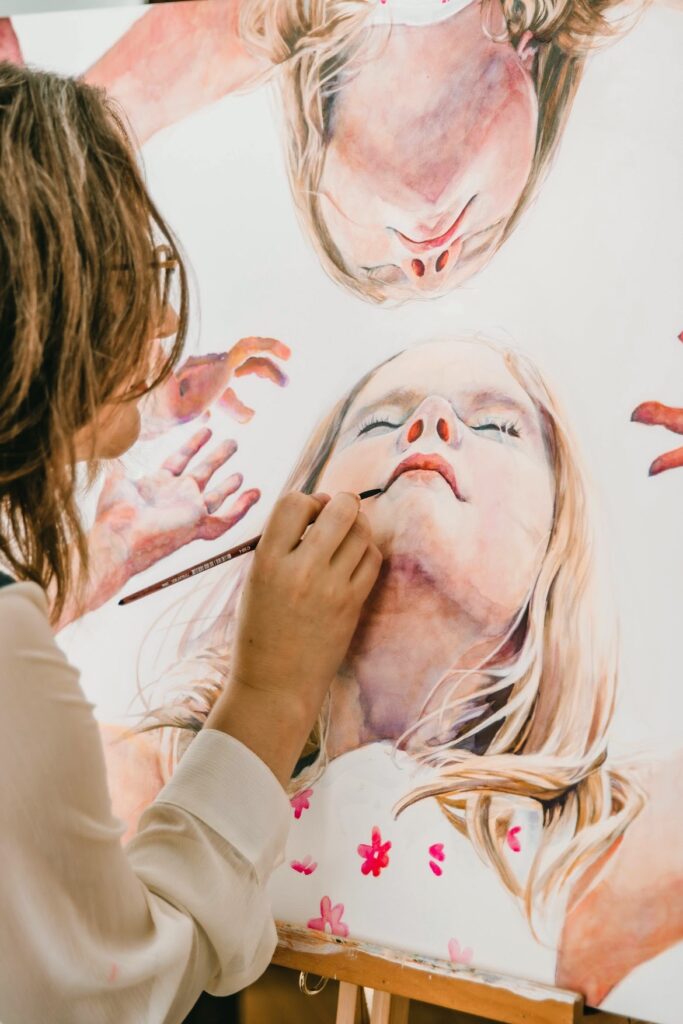
Ballpoint pen is definitely something I do as a meditative process. It’s a really important base in my practice because I can get mentally burned out with painting. It’s much more passive for me. I can do these drawings on my couch, carry them in my purse and pick them up whenever I feel stuck with watercolour painting. They are also great when I don’t have a lot of space in my schedule to work large scale. I always have a few drawings going at the same time. When I’m feeling frustrated with a painting I take a breather and go back to drawing. The layering process is really similar to watercolour. It’s multiple light layers of colour, but I can be extremely controlled and tight with it. It satisfies a creative itch and desire to be in control of every minuscule detail so I can get it out of my system and push myself with other mediums.
3. Erin, the ‘Chef Portraits’ series is incredible. Would you share how you came up with the series?
Thank you! My Chef Portrait series was born out of a commission from the amazing French restaurant in Chicago, Obelix. The owners, Oliver and Nico Poilevey wanted art in the space that would honour the chefs that inspired everyone on the team. The portraits were mostly of French chefs (with the exception of Anthony Bourdain). When possible I painted from footage of them working in their kitchens, rather than static images of them posing. I wanted these portraits to feel conversational. As if you were standing next to them in the kitchen as they worked on their craft. I sell prints and the originals on my website, but you can see them hanging at the restaurant. My favourite ones in the series ended up being portraits of the owner’s parents, Chef Jean-Claude and Susanne Poilevey who were both very well-respected restaurant owners in Chicago. This series is something I want to keep expanding on and I’ll likely release a new set of ink portraits in the near future.
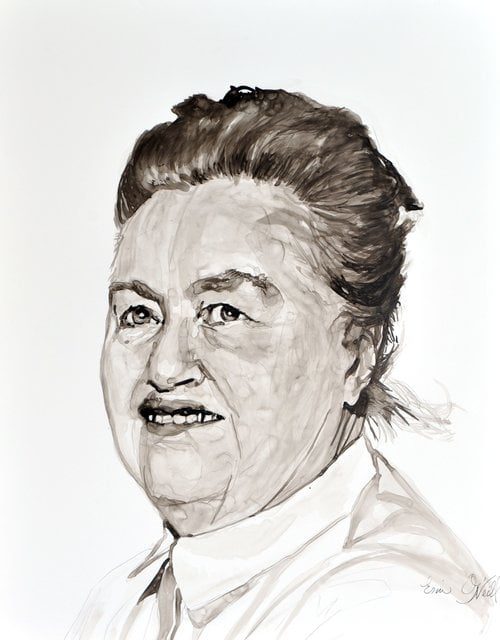

4. Your artwork ‘Assessing the Damage’ is intriguing. What message do you wish to convey through it?
Assessing the damage was a painting I did about early experiences with grief and loss. A couple of years back I lost my Dad very suddenly and unexpectedly while I was home visiting my family in St.Louis. I spent the day with him and then later that night he had a massive heart attack and died at the hospital. This experience of having someone I loved go from being in their body in a way that seemed healthy and vibrant to just being gone within a matter of hours was completely surreal. It was as if my life had been struck by lightning and this huge structural limb in my family tree had been taken out in an instant. It was surreal entering his home the next day. With signs of life all over the house.
In the painting, the tree branch still looks alive, though it is clearly not connected to the tree anymore. Right after my dad died it was hard to believe he was really dead. If I held still, I could almost feel like he was alive, just not in the room. In the painting, you see a young girl approaching cautiously and sort of taking in the mess she has to face. You can’t really see what’s beyond the fallen branch. She can’t move forward until it is cleared from the path, but it’s clear she won’t be able to do it alone. and the tree is forever changed. It looks violent, but the scene is calm. That’s what it feels like in the aftermath of sudden loss. a sort of eerie numbness sets in because your brain is still processing the new reality. So in the painting, you can’t fully see the extent of the damage or loss. There’s too much to take in. Instead, we are in a moment that is about looking closely and processing.

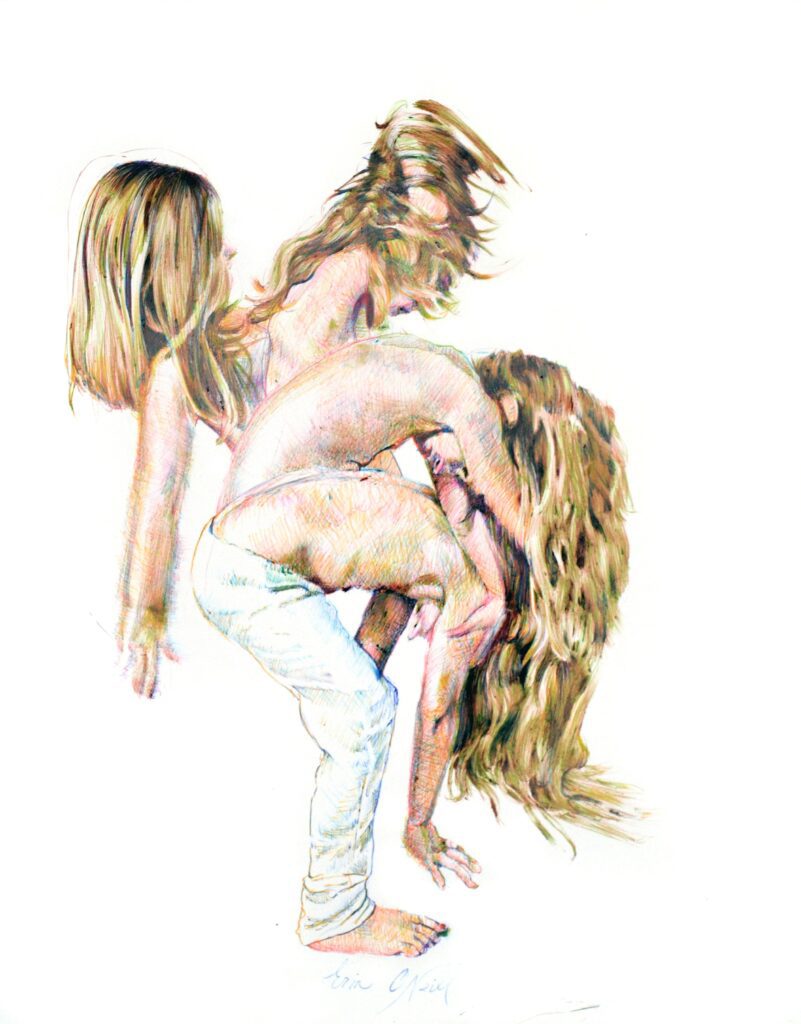
5. Erin, what inspired you to be the artist you are today?
I’m inspired by my own family. My parents both loved art and music so growing up I had a childhood that was rich with it. My parents took us to the art museum and played vinyl records on repeat at home. My dad was a musician, and even though he was incredibly talented, he was very private about it. It was something you could see when he played that brought him incredible peace and joy. My mom was and still is, an aspiring writer. My Stepfather is an amazing carpenter. He has a knack for creating simple machines and contraptions to solve problems and when he is excited about a project he knows how to make it look beautiful. All of my parental figures were pursuing crafts and being driven by a desire to create and express themselves, outside of their roles as parents or careers. And so from a young age, I had examples of this. The importance of having a creative practice to return to, not because it was a job, or source of income (though occasionally it was) but just being driven by the desire to figure out what works and how it works and most importantly adequately express oneself, if only for the sake of creative expression. So foundationally the artist I am today was nurtured by the environment I grew up in.
Read more about Erin













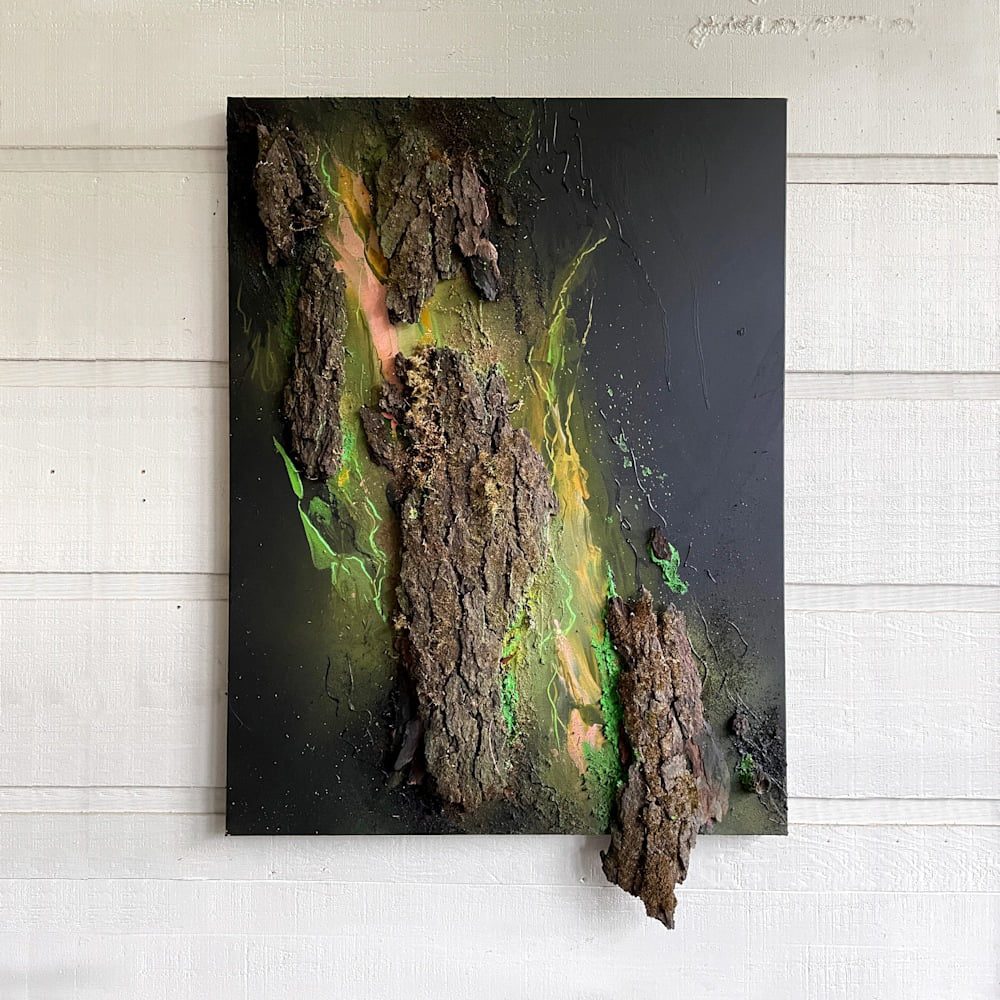


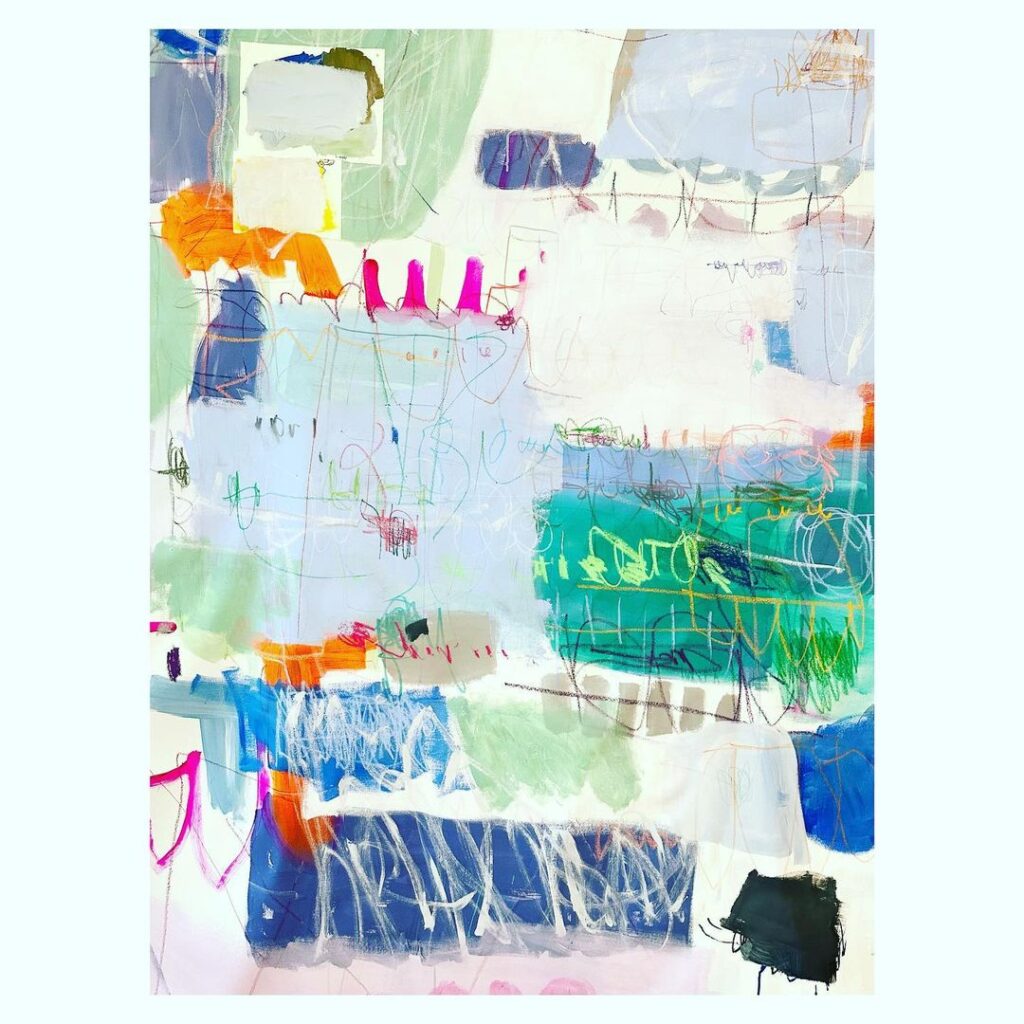
Comments 16